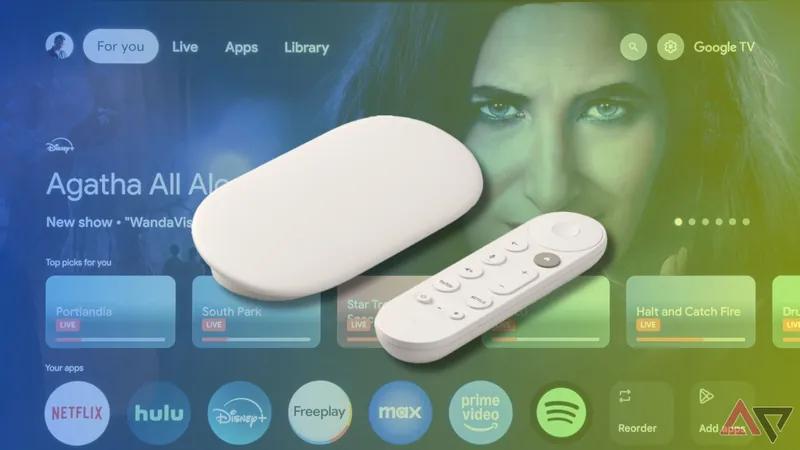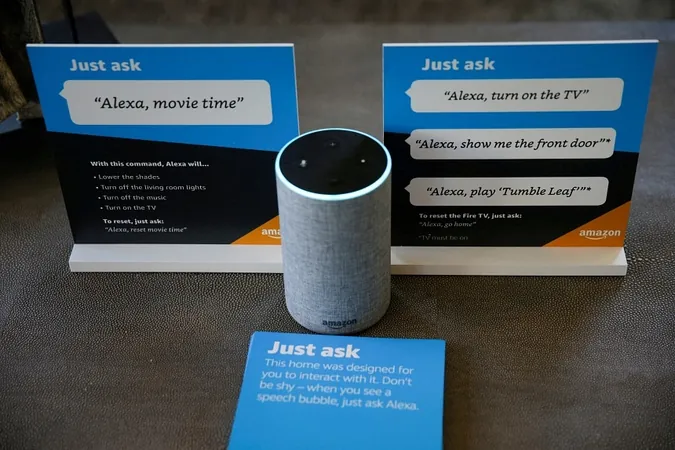
Why the Google TV Streamer Falls Short: A Disappointing Investment for Streaming Enthusiasts
2024-09-29
The new Google TV Streamer has hit the market with a price tag of $100, which is startlingly double that of the Chromecast with Google TV 4K it replaces. While one would expect substantial improvements for such a price increase, the device disappointingly does not deliver. With an aging processor and lack of support for the latest Wi-Fi standards, the Google TV Streamer struggles under the weight of modern expectations.
Once upon a time, the Chromecast with Google TV was a favorite recommendation for affordable streaming, but that era seems to be dwindling. The Google TV Streamer arrives packed with the same old issues that plagued its predecessor and at a notably higher cost.
Under the Hood: Aging Hardware and Limited Performance
One of the primary concerns is the processor that powers the Google TV Streamer. While Google is tight-lipped about the specific chip used, reports suggest it's the MediaTek MT8696. If true, this means the 2024 Google TV Streamer shares its architecture with the 2021 Amazon Fire TV Stick 4K Max, which raises eyebrows about its capabilities. Although it boasts double the RAM of its predecessor, concerns linger over whether this would translate to a noticeable performance boost.
In a statement from Google, the company claims that the new streaming device is 22% faster than the Chromecast with Google TV. However, with such modest enhancements, users may still find the experience frustratingly slow. The Google TV Streamer also introduces Android 14 for TV, advertising faster boot times and improved optimizations. Yet, one has to wonder if the improvements stem predominantly from the outdated hardware or the new software iteration.
In terms of connectivity, the Google TV Streamer features a Gigabit Ethernet port, but it uses the outdated Wi-Fi 5 standard, a drawback for consumers who expect modern performance. This is particularly glaring when you consider that competitors like the Google Pixel 9 series and iPhone 16 Pro are already adopted Wi-Fi 7 technology.
An Underwhelming Challenger
The Google TV Streamer had a prime opportunity to position itself alongside competitors like the Apple TV and Nvidia Shield TV but ultimately falls short. The Nvidia Shield TV is still a fierce contender, thanks to its powerful Tegra X1+ SoC that remains relevant even after numerous years. While the Shield TV may also seem outdated, it still outperforms the Google TV Streamer with robust multitasking capabilities and superior gaming performance.
Similarly, the latest Apple TV 4K with its A15 Bionic chipset outclasses the Google TV Streamer on multiple fronts. This chip, used in the iPhone 14 series, showcases remarkable performance benchmarks, making Google's offering appear mediocre in comparison. Even in terms of pricing, while the Google TV Streamer is cheaper than both the Apple TV 4K and the Nvidia Shield TV, it's significantly closer in performance to the more affordable Chromecast with Google TV, raising questions about its overall value.
Where's the Innovation?
Google’s latest offering certainly holds potential, but wasted opportunities haunt the Google TV Streamer. Unlike the Nvidia Shield Pro, which features AI for superior upscaling, the TV Streamer seems more focused on monetization through ads and promotions, neglecting the chance to harness AI for enhancing user experience – a strategic decision that could have set it apart in a fierce market.
In conclusion, the Google TV Streamer serves as a stark reminder that pricing doesn't always equate to value. With outdated hardware, limited software improvements, and missed chances for innovation, potential buyers may want to hold on to their current streaming devices for a little while longer. The quest for a powerful, affordable streaming solution continues.




 Brasil (PT)
Brasil (PT)
 Canada (EN)
Canada (EN)
 Chile (ES)
Chile (ES)
 España (ES)
España (ES)
 France (FR)
France (FR)
 Hong Kong (EN)
Hong Kong (EN)
 Italia (IT)
Italia (IT)
 日本 (JA)
日本 (JA)
 Magyarország (HU)
Magyarország (HU)
 Norge (NO)
Norge (NO)
 Polska (PL)
Polska (PL)
 Schweiz (DE)
Schweiz (DE)
 Singapore (EN)
Singapore (EN)
 Sverige (SV)
Sverige (SV)
 Suomi (FI)
Suomi (FI)
 Türkiye (TR)
Türkiye (TR)